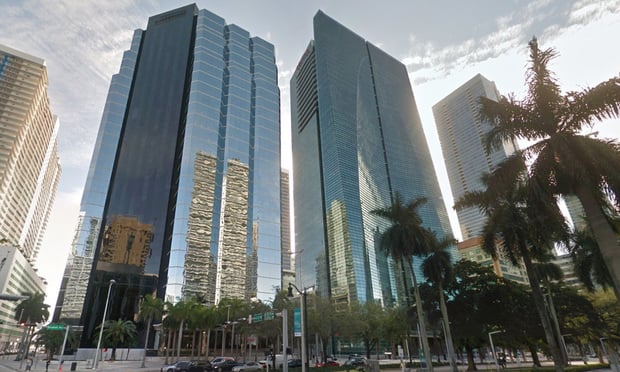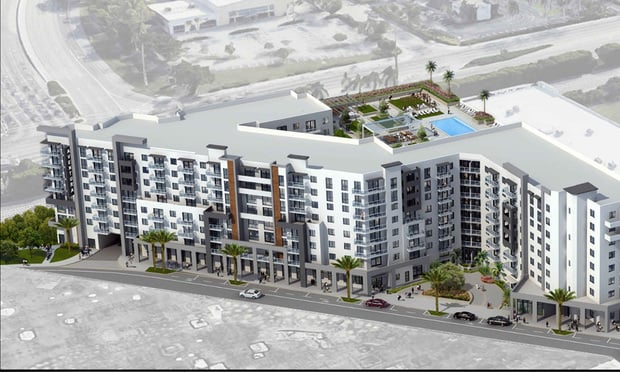MIAMI—It was once distressed and abandoned. Now, this 1950s multifamily building in one of Miami's most underserved communities is getting a new lease on life—quite literally.
Hampton Village Apartments has been transformed into an affordable housing complex in Miami's Brownsville neighborhood. The fully-redeveloped multifamily project will offer 100 affordable housing units for about 250 residents.
“Rather than being an eyesore to the neighborhood, Hampton Village is now a beautiful apartment building that residents can feel proud of,” says Stephanie Berman, president of Carrfour Supportive Housing. “The complete redevelopment of this building signals a new beginning for these Miami families.”
Carrfour partnered with Landmark Development on the $21 million redevelopment of Hampton Village Apartments. The project was made possible by federal stimulus monies allocated at the local level through the U.S. Department of Housing and Urban Development's (HUD) Neighborhood Stabilization Program.
“In addition to bringing much needed quality affordable housing to the area, Carrfour is also providing on-site services at Hampton Village aimed at putting unemployed residents back to work,” Berman says. “We are not only rebuilding apartments, we are rebuilding lives.”
Located at 2800 Northwest 43rd Terrace in central Miami-Dade, Hampton Village's affordable housing units are designated for low-income families earning at or below 60% of the area's median income. For example, a single person would have to earn less than $31,560 to qualify, according to the Florida Housing Finance Corp.
“Miami's Brownsville neighborhood is a historic district filled with significant landmarks such as the Historic Hampton House Museum and Jazz Center, and projects like Hampton Village are helping to revitalize this unique area within Miami,” says Francisco Rojo, vice president of Landmark. Hampton Village is next to the historic Hampton House Motel, a favorite gathering place for prominent African Americans in the last days of segregation.
After Cassius Clay defeated Sonny Liston for the heavyweight boxing title in Miami Beach in 1964, he took his friend Malcolm X to Hampton House, which was one of a handful of Miami establishments open to African Americans at the time. The Hampton House's famous jazz club played host to Martin Luther King Jr., Sammy Davis, Jr., Sam Cooke and Nat King Cole.
Part of the American Recovery and Reinvestment Act of 2009, HUD's NSP2 initiative granted nearly $2 billion to states, local governments, nonprofits and public and/or private nonprofit entities on a competitive basis to rehab distressed properties. Carrfour was part of the Miami-Dade County NSP consortium that was granted $89 million in funding through the program. HUD has allocated $6.82 billion to NSP1, NSP2 and NSP3 grantees across the country.
Hampton Village marks the last of three NSP2-funded redevelopment projects Carrfour completed in Miami. Carrfour has spent $17 million in federally-granted NSP2 funds on the acquisition, renovation and redevelopment the formerly-distressed Miami-Dade properties. The other projects—Tequesta Knoll and Harvard House—delivered in 2013.
Want to continue reading?
Become a Free ALM Digital Reader.
Once you are an ALM Digital Member, you’ll receive:
- Breaking commercial real estate news and analysis, on-site and via our newsletters and custom alerts
- Educational webcasts, white papers, and ebooks from industry thought leaders
- Critical coverage of the property casualty insurance and financial advisory markets on our other ALM sites, PropertyCasualty360 and ThinkAdvisor
Already have an account? Sign In Now
*May exclude premium content© 2025 ALM Global, LLC, All Rights Reserved. Request academic re-use from www.copyright.com. All other uses, submit a request to [email protected]. For more information visit Asset & Logo Licensing.








